Kitchen Faucet Types: Single Hole, Bar, Centerset, Widespread, Bridge and Pot Filler
Before buying a kitchen faucet, there are a few decisions you have to make:
- Weather your faucet will be installed on the wall or on the sink. We have a specific article on this, which I recommend you read first if you still don’t know which will be your case.
- The installation type, which basically means: number of holes and handles. This is what we’ll discuss in this article.
- The features you want your faucet to include, such as pull down, pull out or side sprays, touchless technology, built-in water filter and others. We’ll also talk about these details in the end of this article.
The installation type is an important decision because it determines the holes you’ll need to provide on your sink or countertop, for deck-mounted faucets, or the plumbing setting on the wall, for wall-mounted faucets.
As the types look quite different from each other, this decision will also have a big impact in your kitchen’s look.
So let’s see the differences between the main kitchen faucet types.
Page Contents:
Kitchen single hole faucets
This type, as the name suggests, has only one hole, so it doesn’t use much space of your sink. Within single hole faucets, there are some different types:
Single handle (standard kitchen faucet)
A single handle on the base of the faucet controls both volume and temperature of water.
Kitchen single handle faucets are easy to install, easy to use and provide a more precise volume and temperature control.
It is the most common installation type. You will find a lot of different configurations and styles for this type.

This is a deck-mounted type only, which means it is installed on the sink or countertop.
Prep or bar sink faucets
This type is similar to the standard faucet. But, as they are usually installed on secondary sinks, they are usually smaller.
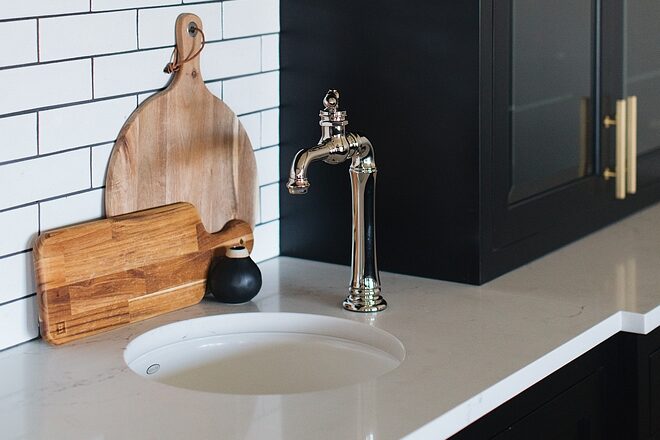
Pot fillers
Installed above the range, these faucets have the specific task of filling pots when you are cooking.
They are recommended to people who cook a lot. They can gain time while preparing different meals at the same time, for example. You can easily fill a pot without leaving another pan you’re already working on.
They can also be practical for large kitchens, where the sink and the stove aren’t that close. But remember the drain will still be only in the sink! So you’ll still need to carry the pot one way.
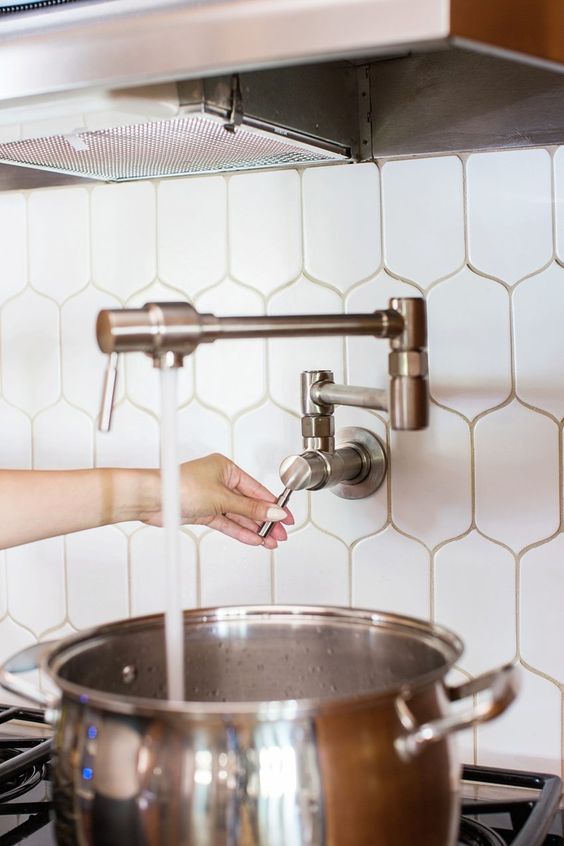
Most models are wall-mounted, which means you should decide you want a pot filler in the beginning or your build, so you can provide the right plumbing for it.
But if it’s more convenient for you to install one on the countertop for some reason (say your range will be placed on an island countertop), you can also find deck-mounted pot fillers.
Kitchen centerset faucets
Centerset faucets are versatile, because they can be installed on sinks or walls with one, two or three holes.
The spout and the handles are mounted on a deck plate. Most models are deck-mounted.
The con of this and the following types is that you’ll have to adjust the temperature again every time you open the faucet.
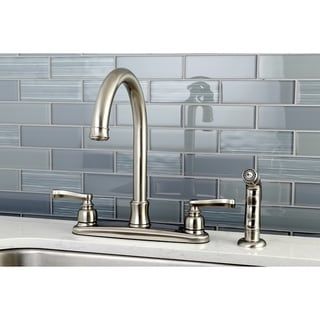
Kitchen widespread faucets
This type has separate spout and handles. Each one is mounted on a different hole, which means you’ll need to provide 3 holes on the sink or countertop.
This is a deck-mounted type only.
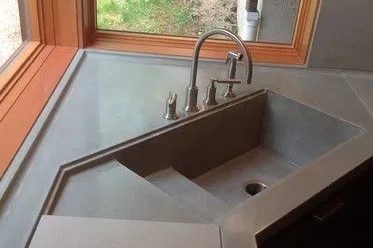
Kitchen bridge faucets
With widespread handles but only two holes, bridge faucets connect the levers and the spout above the sink or outside the wall, instead of doing it underneath.
As it’s a single piece that includes all parts, all in steel covered with chrome or other material, it’s usually more expensive than other types, that use cheaper materials for the part that mixes the water.

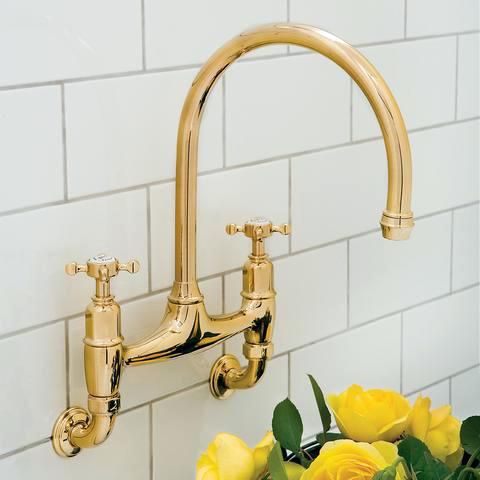
Which kitchen faucet type is best for you?
As we saw on the photos, except for the centerset faucets, all types can be used for a stylish decor.
If you already have your countertop and sink and just want to change your faucet, it will be easier to keep the same type so you don’t have to adapt the holes.
If you’re building or completely renovating your kitchen, you can choose any type you like. Pick the one you find more aesthetic and fits in your budget. Then compare the models within the type you chose, and pick one that has all the features you need:

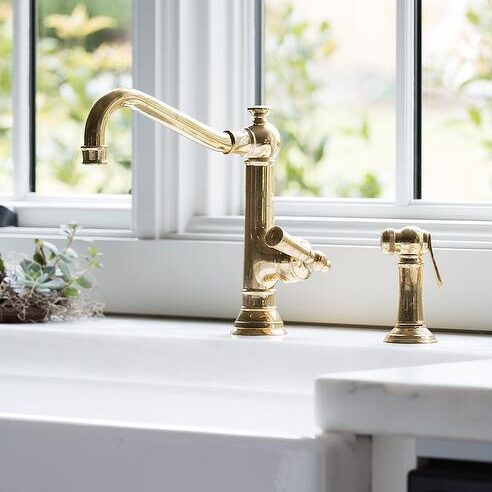
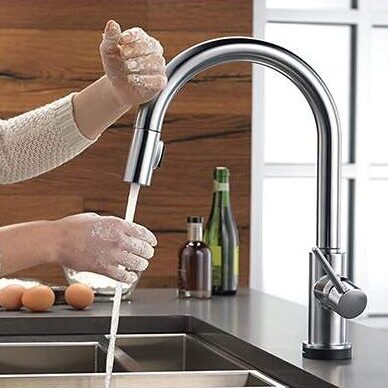
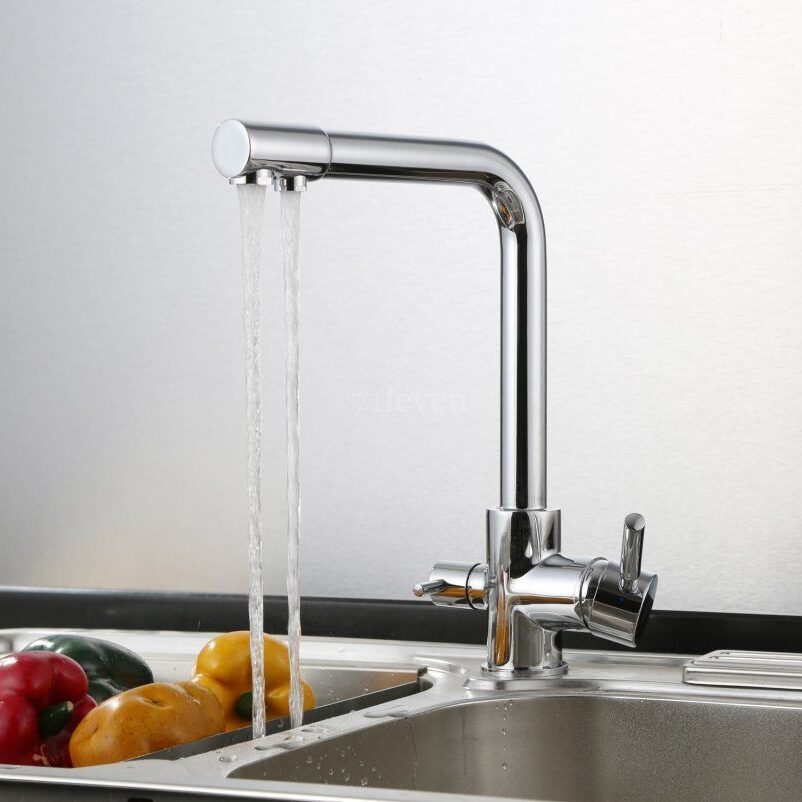
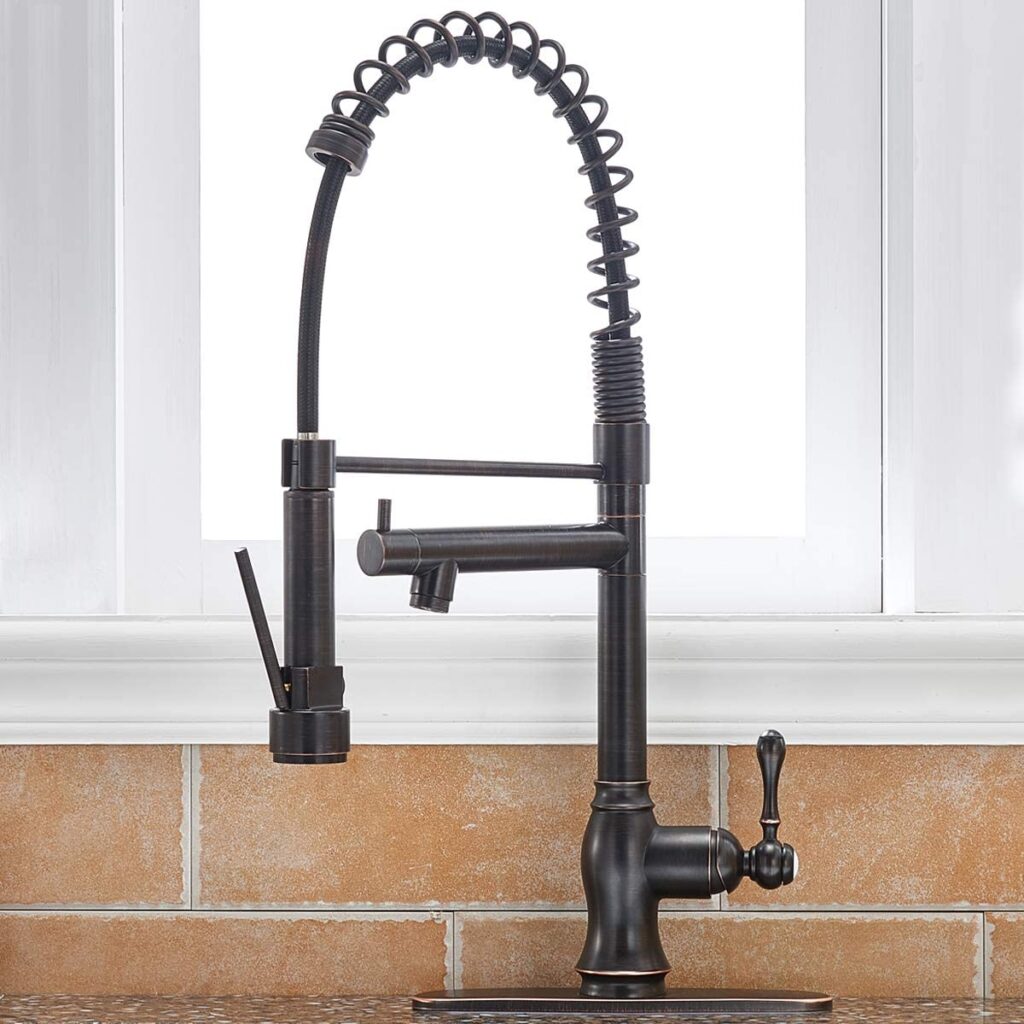
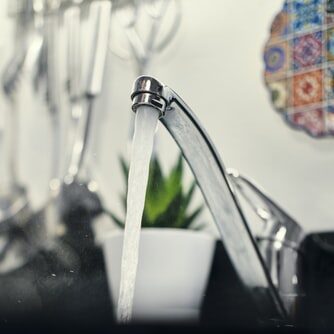
It is not so easy to choose the right kitchen faucet type, right? I hope this guide has made it easier!
